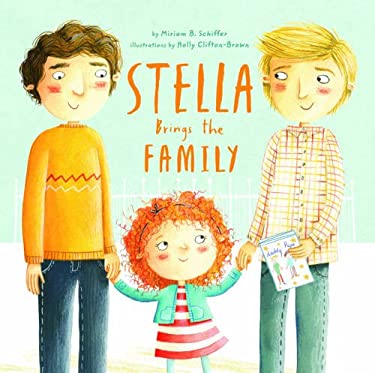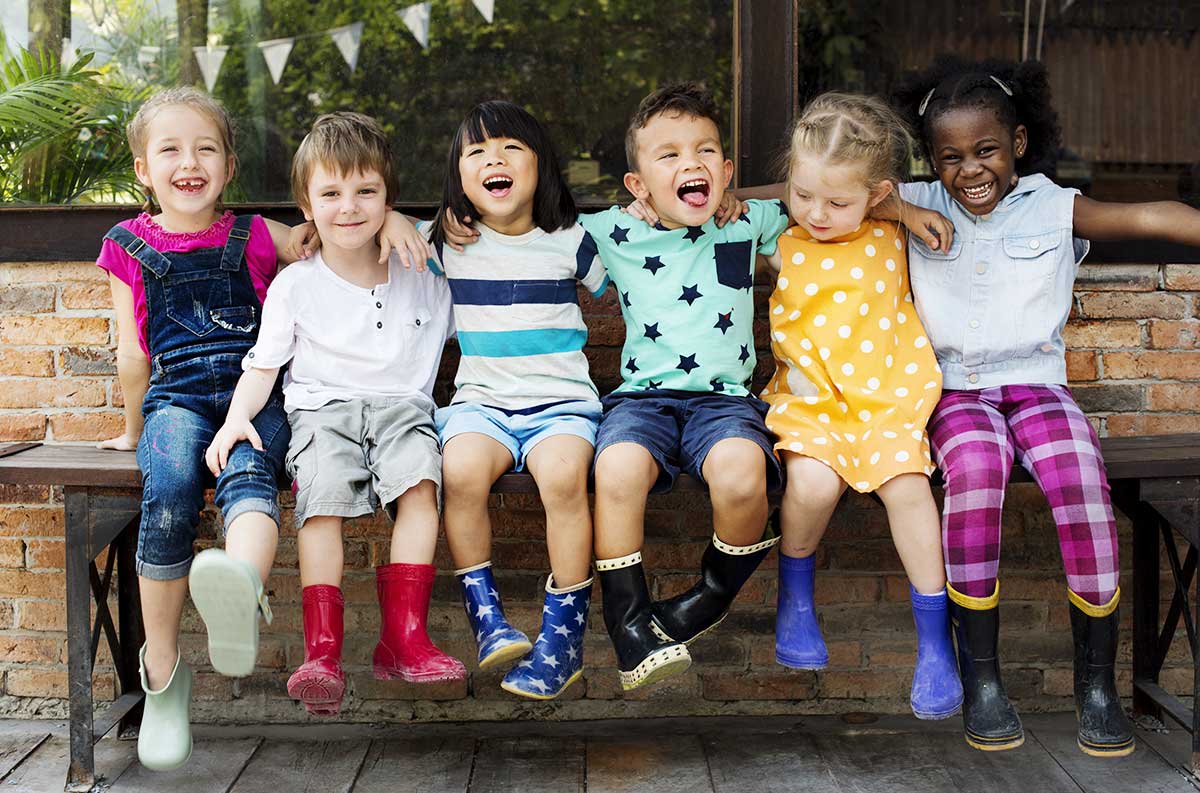
Inclusive Children's Book Teaching Guide
Stella Brings the Family
What is this book about?
Stella's class is having a Mother's Day celebration, but what's a girl with two daddies to do?
Stella has her Papa and Daddy, who take care of her, plus a whole gaggle of other loved ones who make her feel special and supported every day. She just doesn't have a mom to invite to the party.
Fortunately, Stella finds a unique solution to her party problem in this sweet story about love, acceptance and the true meaning of family.
Who is depicted in this book?
What early childhood themes and concepts does this book explore?
- Families come in many different forms
- Immediate family versus extended family
- Families are often larger than we realize
- People and how they are similar and different
- How friends come together to solve problems
- Emotions, such as how it feels to be excluded
- How to make sure a celebration includes everyone
How does this book support anti-bias education?
Stella has two dads, and the story explores how she and her friends work together to solve the problem when Stella has no mom to bring to a Mother's Day celebration at school. Stella Brings the Family may be used to represent and affirm diverse families to all children, demonstrate Stella's pride in her family structure, empower children to work together to remedy exclusionary practices, and introduce young children to concepts such as allyship and forming a supportive and inclusive community.
Depending on how the book is shared or used—and the developmental level of the children—the images and text may be used to support the following core goals from the book, Anti-Bias Education for Young Children and Ourselves:
Identity—Teachers will nurture each child’s construction of knowledgeable and confident personal and social identities so that children will demonstrate self-awareness, confidence, family pride, and positive social identities.
Diversity—Teachers will promote each child’s comfortable, empathetic interactions with people from diverse backgrounds so that children will express comfort and joy with human diversity, use accurate language for human differences, and form deep, caring connections across all dimensions of human diversity.
Justice—Teachers will foster each child’s capacity to critically identify bias and nurture each child’s empathy for the hurt that bias causes so that children will increasingly recognize unfairness (injustice), have the vocabulary they need to describe unfairness, and understand that unfairness hurts.
Activism—Teachers will cultivate each child’s ability and confidence to stand up for oneself and for others in the face of bias so that children will demonstrate a sense of empowerment and the skills to act, with others or alone, against prejudice and/or discriminatory actions.
How can this book be used to meet early childhood learning standards?
For all ages
Use Stella Brings the Family to meet early childhood literacy standards >
For children from birth to age three
Teaching suggestion: Point out children in familiar settings such as the classroom and home and discuss the activities that they are engaged in.
What Illinois Early Learning Guideline does this meet for children from birth to age three?
Developmental DomainLanguage Development, Communication and Literacy
Standard: Receptive CommunicationChildren demonstrate the ability to comprehend both verbal and nonverbal communication.
Indicators for children:
- Engages in joint attention with a caregiver, e.g., joins in looking at the same object or shifts gaze to where someone is pointing (7–18 months)
- Follows a one-step, simple request when a gesture is used (7–18 months)
- Responds appropriately to familiar words, e.g., hears the words “so big,” and puts arms in air (7–18 months)
- Understands approximately 100 words relevant to their experiences and cultural context (7–18 months)
- Recognizes and demonstrates understanding of familiar pictures, people and objects, e.g., says “mama” while pointing to mother (16–24 months)
- Demonstrates understanding of a story by reacting with sounds, facial expressions and physical movement, e.g., laughing, widening eyes or clapping (21–36 months)
- Responds verbally and/or nonverbally to comments or questions while engaged in conversations with both peers and adults (21–36 months)
Teaching suggestion: Identify the people in Stella’s family. Point out the important caregivers in her large family.
What Illinois Early Learning Guideline does this meet for children from birth to age three?
Developmental DomainSocial-Emotional Development
Standard: Self-ConceptChildren develop identity of self.
Indicators for children:
- Shows awareness of significant people by calling them by name, such as “Papa” (7–18 months)
- Names family members and shares stories about them (21–36 months)
Teaching suggestion: Point out and describe the features, similarities and differences among the many diverse children and adults in the book.
What Illinois Early Learning Guideline does this meet for children from birth to age three?
Developmental DomainCognitive Development
Standard: Concept DevelopmentChildren demonstrate the ability to connect pieces of information in understanding objects, ideas and relationships.
Indicators for children:
- Begins to focus on objects, sounds and people (Birth–9 months)
- Identifies and indicates objects and people in pictures (7–18 months)
- Begins to identify and name objects and people (16–24 months)
- Identifies characteristics of objects and people (21–36 months)
For preschoolers (ages three to five)
Teaching suggestion: Ask the children to recall events from the story. Ask: "What happened? Who was in this story? What were Stella's two dads like as parents?"
What Illinois Early Learning and Development Standards does this meet for preschoolers?
Language Arts Standard2BRecognize key ideas and details in stories.
Benchmark 2.B.ECc:
With teacher assistance, identify main character(s) of the story.
Teaching suggestion: Ask the children to consider the members of their own families and describe how Stella’s family and the other families in the book are similar and different. Children can also share their observations about the different types of families that they know.
What Illinois Early Learning and Development Standards does this meet for preschoolers?
Social Studies Standard18AExplore people, their similarities and their differences.
Benchmark 18.A.ECa:
Recognize similarities and differences in people.
Teaching suggestion: Identify points in the story when Stella is feeling a particular emotion. Ask questions such as: "What is that feeling or emotion? How do you know? What led Stella to feel that way? How would you feel in Stella’s position? Did something happen to change that feeling? What was it?"
What Illinois Early Learning and Development Standards does this meet for preschoolers?
Social/Emotional Development Standard31ADevelop positive relationships with peers and adults.
Benchmark 31.A.ECb:
Recognize the feelings and perspectives of others.
Teaching suggestion: Model the different types of families in the book using figures or other items to represent family members, such as shapes cut from felt. Support the children as they create different types of families.
What Illinois Early Learning and Development Standards does this meet for preschoolers?
Social Studies Standard18AExplore people, their similarities and their differences.
Benchmark 18.A.ECa:
Recognize similarities and differences in people.
Teaching suggestion: Discuss how Stella and her friends solve a problem of exclusion at their school. What ideas do the children have for solving the problem in this story? Are there examples in your own classroom when children have felt left out? What ideas can children come up with to address these situations?
What Illinois Early Learning and Development Standards does this meet for preschoolers?
Social/Emotional Development Standard32BApply decision‐making skills to deal responsibly with daily academic and social situations.
Benchmark 32.B.ECa:
Participate in discussions about finding alternative solutions to problems.
See inside this book.

